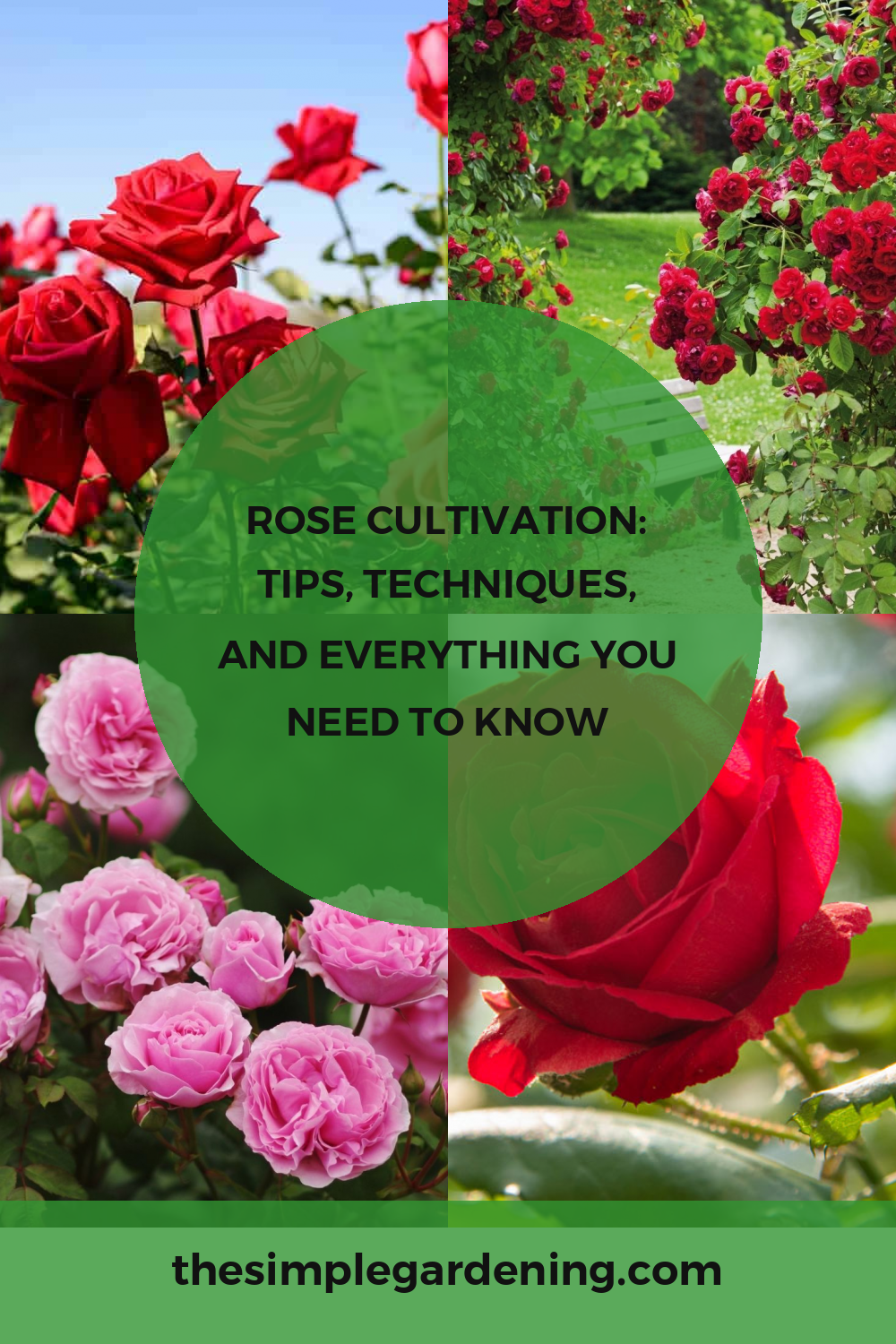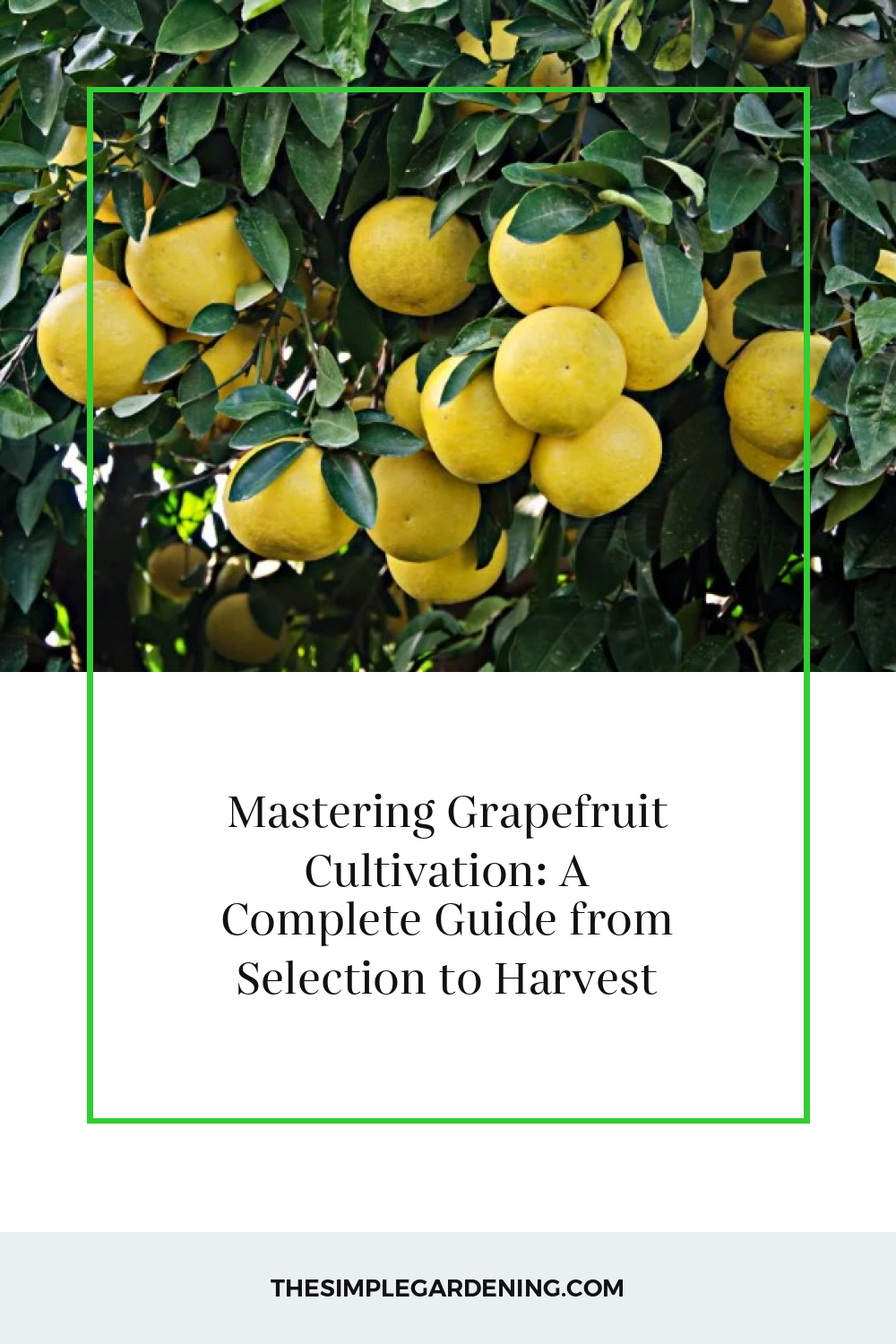Growing roses is a delightful and rewarding endeavor for gardeners of all levels. Whether you’re a novice or an experienced horticulturist, understanding the intricacies of rose cultivation can enhance your gardening experience and yield beautiful blooms.
History of Rose Cultivation
Roses have been cherished by civilizations for thousands of years. They were first cultivated in ancient China and later spread to the Middle East and Europe. The rose’s rich history is intertwined with mythology, art, and literature, symbolizing love, beauty, and passion across cultures.
| Civilization | Era | Contribution to Rose Cultivation |
|---|---|---|
| Ancient China | 5,000 years ago | Early cultivation and use in medicine |
| Roman Empire | 500 BC – 500 AD | Decorative gardens and symbolism in rituals |
| Medieval Europe | 12th – 15th Century | Development of new varieties through crossbreeding |
Benefits of Growing Roses
Growing roses offers numerous benefits beyond their visual appeal. Here are some key advantages:
- Aesthetic Appeal: Roses add beauty and elegance to any garden.
- Fragrance: Many varieties emit a lovely scent that can enhance the ambiance of your outdoor space.
- Pollinators: Roses attract bees and other beneficial insects.
- Therapeutic: Gardening and caring for roses can be a relaxing and stress-reducing activity.
| Benefit | Description |
|---|---|
| Aesthetic | Enhances garden beauty with vibrant colors |
| Fragrance | Provides a pleasant aroma that can uplift moods |
| Pollinators | Attracts bees and beneficial insects |
| Therapeutic | Reduces stress and promotes mental well-being |
Types of Roses
Understanding the different types of roses helps in selecting the right variety for your garden.
- Hybrid Tea Roses: Known for their large, high-centered blooms.
- Floribundas: Produce clusters of flowers, great for mass planting.
- Grandifloras: A hybrid of hybrid teas and floribundas, combining the best of both.
- Miniatures: Perfect for small spaces and containers.
- Shrub Roses: Hardy and require less maintenance.
| Type of Rose | Characteristics |
|---|---|
| Hybrid Tea | Large, high-centered blooms, often single stem |
| Floribunda | Clusters of flowers, continuous blooming |
| Grandiflora | Hybrid vigor, large clusters of blooms |
| Miniature | Small size, suitable for containers |
| Shrub | Hardy, disease-resistant, versatile uses |
Planning Your Rose Garden
Proper planning is crucial for a thriving rose garden. This section covers everything from choosing the right location to designing your garden layout.
Choosing the Right Location
Roses thrive in locations that receive ample sunlight and have well-drained soil. Select a spot in your garden that gets at least six hours of direct sunlight daily.
| Factor | Importance |
|---|---|
| Sunlight | Minimum 6 hours of direct sunlight |
| Soil Drainage | Well-drained to prevent root rot |
| Air Circulation | Reduces disease risk and promotes healthy growth |
Selecting Rose Varieties
Choosing the right rose variety depends on your climate, garden space, and personal preferences. Consider factors such as bloom color, fragrance, and maintenance requirements.
| Variety | Best For |
|---|---|
| Hybrid Tea | Formal gardens, cut flowers |
| Floribunda | Mass planting, continuous color |
| Miniature | Small spaces, containers |
Designing the Garden Layout
Design your garden layout to ensure optimal growth and visual appeal. Arrange taller varieties at the back and shorter ones in the front, allowing each plant enough space to grow.
| Layout Element | Tips |
|---|---|
| Plant Spacing | Ensure adequate space between plants for airflow |
| Layering | Taller varieties at the back, shorter in front |
| Pathways | Create accessible pathways for maintenance |
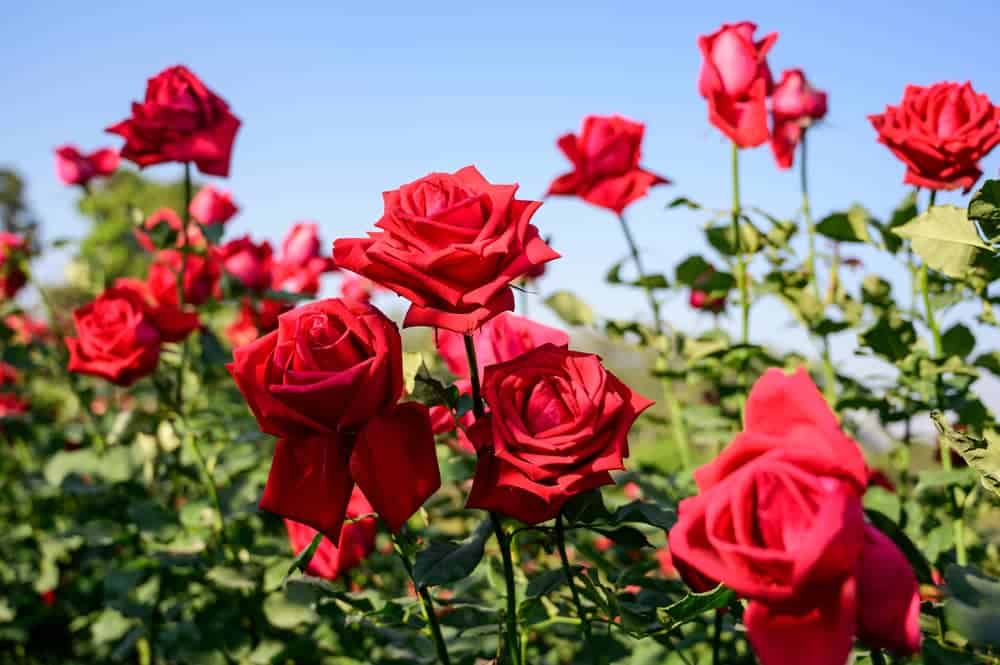
Source Image: lawn.com.au
Soil Preparation
Proper soil preparation sets the foundation for healthy rose plants. This involves soil testing, amendments, and understanding soil pH.
Soil Testing and Amendments
Testing your soil helps determine its nutrient content and pH level. Based on the results, you can amend the soil with organic matter, compost, or specific fertilizers.
| Soil Component | Importance |
|---|---|
| pH Level | Roses prefer slightly acidic soil (pH 6.0-6.5) |
| Nutrients | Essential for growth; add compost or fertilizers |
| Organic Matter | Improves soil structure and water retention |
Soil pH and Its Importance
Soil pH affects nutrient availability and overall plant health. Roses prefer slightly acidic soil. Adjust pH levels using lime to raise it or sulfur to lower it.
| pH Level | Effect on Roses |
|---|---|
| Below 6.0 | Too acidic, may cause nutrient deficiencies |
| 6.0 – 6.5 | Optimal range for nutrient uptake |
| Above 7.0 | Too alkaline, may limit nutrient availability |
Composting and Mulching
Composting and mulching are vital practices for maintaining healthy soil. Compost enriches the soil with nutrients, while mulch helps retain moisture and suppress weeds.
| Practice | Benefits |
|---|---|
| Composting | Adds nutrients, improves soil structure |
| Mulching | Retains moisture, suppresses weeds, moderates temperature |
Planting Roses
Planting roses correctly ensures they establish well and grow vigorously. This section covers timing, preparation, and planting techniques.
When to Plant Roses
The best time to plant roses depends on your climate. In general, spring and fall are ideal seasons. Planting during these times allows roses to establish roots before extreme weather.
| Season | Benefits |
|---|---|
| Spring | Ideal for root establishment before summer heat |
| Fall | Allows roots to develop before winter dormancy |
Preparing Rose Bushes for Planting
Proper preparation of rose bushes before planting is crucial. Soak bare-root roses in water for 24 hours and trim any damaged roots. For potted roses, water them thoroughly before planting.
| Step | Purpose |
|---|---|
| Soaking | Hydrates bare-root roses, prevents shock |
| Trimming | Removes damaged roots, encourages healthy growth |
| Watering | Ensures potted roses are well-hydrated |
Planting Techniques for Bare Root and Potted Roses
The planting technique varies slightly for bare-root and potted roses. Both require digging a hole twice the width of the root ball and deep enough to accommodate the roots.
| Type of Rose | Planting Steps |
|---|---|
| Bare Root | Dig hole, create mound, spread roots, backfill |
| Potted | Dig hole, place pot at correct depth, backfill |
Watering and Irrigation
Watering is a critical aspect of rose care. Proper irrigation techniques can prevent diseases and promote healthy growth.
Water Requirements for Roses
Roses need consistent watering, especially during dry spells. However, overwatering can lead to root rot and other issues.
| Requirement | Frequency |
|---|---|
| Established Plants | 1-2 inches per week |
| Newly Planted | More frequent until established |
Drip Irrigation vs. Overhead Watering
Drip irrigation is often preferred over overhead watering as it delivers water directly to the roots, minimizing leaf wetness and reducing disease risk.
| Method | Advantages |
|---|---|
| Drip Irrigation | Efficient water use, reduces disease risk |
| Overhead Watering | Can lead to leaf wetness, higher disease risk |
Preventing Water-Related Diseases
Proper watering techniques and practices can prevent water-related diseases like black spot and mildew.
| Practice | Tip |
|---|---|
| Watering Timing | Early morning to allow foliage to dry |
| Avoid Wet Foliage | Water at base of plant to keep leaves dry |
Fertilizing Roses
Fertilizing provides roses with the nutrients they need to produce vibrant blooms. Understanding the nutritional needs and choosing the right fertilizers is key.
Nutritional Needs of Roses
Roses require a balanced mix of nitrogen, phosphorus, and potassium, along with trace elements like magnesium and iron.
| Nutrient | Role |
|---|---|
| Nitrogen (N) | Promotes leafy growth |
| Phosphorus (P) | Supports root development and flowering |
| Potassium (K) | Enhances overall plant health |
Organic vs. Synthetic Fertilizers
Both organic and synthetic fertilizers have their pros and cons. Organic options improve soil health, while synthetic fertilizers provide a quick nutrient boost.
| Type | Benefits |
|---|---|
| Organic | Improves soil structure, long-term benefits |
| Synthetic | Immediate nutrient availability |
Fertilizing Schedule and Methods
A consistent fertilizing schedule ensures roses receive nutrients throughout the growing season.
| Time | Fertilizer Type |
|---|---|
| Early Spring | Balanced fertilizer to promote growth |
| Mid-Summer | Fertilizer high in phosphorus for blooming |

Source Image: www.bhg.com.au
Pruning and Deadheading
Pruning and deadheading are essential practices for maintaining the health and appearance of rose bushes.
Importance of Pruning
Pruning helps shape the plant, encourages new growth, and removes diseased or dead wood.
| Benefit | Description |
|---|---|
| Shape | Maintains desired form |
| Growth | Stimulates new shoots and blooms |
| Health | Removes diseased or dead wood |
Tools and Techniques for Pruning
Using the right tools and techniques ensures effective and safe pruning.
| Tool | Use |
|---|---|
| Pruning Shears | For small branches and stems |
| Loppers | For thicker branches |
| Pruning Saw | For large, woody stems |
Deadheading for Continuous Blooming
Deadheading, or removing spent flowers, encourages continuous blooming throughout the season.
| Step | Purpose |
|---|---|
| Cut at Angle | Prevents water from sitting on the cut |
| Above Leaf Set | Encourages new growth from leaf node |
Pest and Disease Management
Managing pests and diseases is crucial for healthy rose plants. This section covers common pests, disease identification, and integrated pest management strategies.
Common Rose Pests
Roses can be affected by a variety of pests, including aphids, spider mites, and Japanese beetles.
| Pest | Identification |
|---|---|
| Aphids | Small, green insects on new growth |
| Spider Mites | Tiny, red or brown, cause stippling on leaves |
| Japanese Beetles | Metallic green beetles, skeletonize leaves |
Identifying and Treating Rose Diseases
Common rose diseases include black spot, powdery mildew, and rust. Early identification and treatment are key to control.
| Disease | Symptoms |
|---|---|
| Black Spot | Black spots on leaves, yellowing |
| Powdery Mildew | White, powdery coating on leaves |
| Rust | Orange pustules on underside of leaves |
Integrated Pest Management Strategies
Integrated Pest Management (IPM) combines cultural, biological, and chemical methods to control pests sustainably.
| Method | Description |
|---|---|
| Cultural | Proper spacing, watering, and pruning |
| Biological | Introducing beneficial insects |
| Chemical | Using pesticides as a last resort |
Rose Propagation
Propagating roses allows you to expand your garden with new plants. This section covers propagation by cuttings, grafting, and growing from seeds.
Propagation by Cuttings
Taking cuttings is a popular method for propagating roses, as it is relatively simple and effective.
| Step | Description |
|---|---|
| Select Cutting | Choose healthy, non-flowering stem |
| Prepare Cutting | Remove lower leaves, dip in rooting hormone |
| Plant Cutting | Insert into soil or rooting medium |
Grafting and Budding Techniques
Grafting and budding involve joining parts of two plants to grow as one. These techniques are often used to propagate roses with desirable traits.
| Technique | Description |
|---|---|
| Grafting | Joining scion to rootstock |
| Budding | Inserting bud into rootstock |
Growing Roses from Seeds
Growing roses from seeds is less common but allows for the creation of new varieties. This method requires patience and care.
| Step | Description |
|---|---|
| Collect Seeds | Harvest from rose hips |
| Stratification | Cold-treat seeds to break dormancy |
| Sow Seeds | Plant in seed-starting mix |
Seasonal Care for Roses
Caring for roses varies with the seasons. Each season has specific tasks to ensure your roses thrive year-round.
Spring Care
Spring is the time for pruning, fertilizing, and preparing for the growing season.
| Task | Description |
|---|---|
| Pruning | Remove dead wood, shape plant |
| Fertilizing | Apply balanced fertilizer |
| Mulching | Refresh mulch to retain moisture |
Summer Care
Summer care focuses on maintaining hydration and managing pests and diseases.
| Task | Description |
|---|---|
| Watering | Ensure consistent moisture |
| Deadheading | Remove spent blooms |
| Pest Control | Monitor and treat as needed |
Fall and Winter Care
Preparing roses for winter involves reducing water, applying mulch, and protecting from cold.
| Task | Description |
|---|---|
| Reduce Watering | Lower water amount as temperatures drop |
| Mulching | Apply thick layer to protect roots |
| Protecting | Use covers or mulch to shield from cold |

Source Image: www.bhg.com.au
Companion Planting with Roses
Companion planting involves growing roses alongside other plants that provide mutual benefits.
Benefits of Companion Planting
Companion planting can enhance growth, repel pests, and improve soil health.
| Benefit | Description |
|---|---|
| Pest Repellent | Certain plants deter harmful insects |
| Soil Health | Companions can improve soil quality |
| Visual Appeal | Creates a diverse and attractive garden |
Best Companion Plants for Roses
Certain plants make excellent companions for roses, including lavender, marigolds, and chives.
| Plant | Benefit |
|---|---|
| Lavender | Repels aphids, adds fragrance |
| Marigolds | Deters nematodes, attracts beneficial insects |
| Chives | Repels aphids and other pests |
Avoiding Harmful Plant Combinations
Not all plants are good companions for roses. Avoid planting them near aggressive or high-nutrient-demanding plants.
| Plant to Avoid | Reason |
|---|---|
| Black Walnut | Releases juglone, toxic to roses |
| Mint | Aggressive growth, can crowd roses |
Rose Varieties and Cultivars
Choosing the right rose variety is crucial for meeting your garden’s specific needs and aesthetic preferences.
Hybrid Teas
Hybrid tea roses are known for their large, elegant blooms and are popular for cutting.
| Characteristic | Description |
|---|---|
| Bloom Size | Large, single flowers |
| Stem | Long, ideal for cutting |
| Bloom Time | Repeated blooming throughout season |
Floribundas and Grandifloras
Floribundas and grandifloras offer prolific blooms and are great for mass planting.
| Characteristic | Floribunda | Grandiflora |
|---|---|---|
| Bloom Type | Clusters of flowers | Large clusters, hybrid vigor |
| Growth Habit | Bushy, compact | Tall, vigorous |
| Use | Borders, mass planting | Cut flowers, landscape |
Miniatures and Shrub Roses
Miniature roses are perfect for small spaces, while shrub roses are hardy and versatile.
| Characteristic | Miniature | Shrub |
|---|---|---|
| Size | Small, compact | Varies, often large |
| Use | Containers, small gardens | Borders, hedges, mixed plantings |
| Maintenance | Low | Low to medium |
Roses in Landscaping
Roses can be incorporated into various landscaping designs to enhance the beauty of your garden.
Designing Rose Beds and Borders
Design rose beds with a mix of rose types and complementary plants to create a stunning display.
| Element | Tips |
|---|---|
| Layering | Tall roses at the back, shorter in front |
| Color Scheme | Choose complementary or contrasting colors |
| Companion Plants | Incorporate plants that enhance rose health |
Using Roses in Mixed Gardens
Incorporate roses into mixed gardens for a diverse and vibrant landscape.
| Benefit | Description |
|---|---|
| Diversity | Adds variety in form and color |
| Ecosystem | Supports a healthy garden ecosystem |
| Year-Round Interest | Roses and other plants provide continuous interest |
Climbing and Rambling Roses in Landscape Design
Use climbing and rambling roses to cover structures and add vertical interest to your garden.
| Structure | Use |
|---|---|
| Trellis | Support for climbing roses |
| Arbor | Creates a beautiful entryway |
| Fence | Adds privacy and beauty |
Harvesting and Using Roses
Harvesting roses at the right time ensures you enjoy their beauty and benefits. This section covers harvesting, preserving, and using roses.
When and How to Harvest Roses
Harvest roses in the morning when they are freshest. Use sharp shears to cut stems at a 45-degree angle.
| Step | Tip |
|---|---|
| Timing | Early morning for freshest blooms |
| Tool | Sharp shears for clean cuts |
| Angle | 45-degree cut to prevent water pooling |
Preserving and Drying Rose Petals
Preserve rose petals by drying them for use in crafts, potpourri, and more.
| Method | Description |
|---|---|
| Air Drying | Lay petals in a single layer, dry in cool, dark place |
| Pressing | Place petals between paper, press with heavy book |
| Oven Drying | Low heat for quick drying |
Culinary and Medicinal Uses of Roses
Roses can be used in culinary and medicinal applications, adding unique flavors and health benefits.
| Use | Description |
|---|---|
| Culinary | Rose water, jams, teas |
| Medicinal | Anti-inflammatory, skincare |
| Aromatherapy | Essential oils for relaxation |
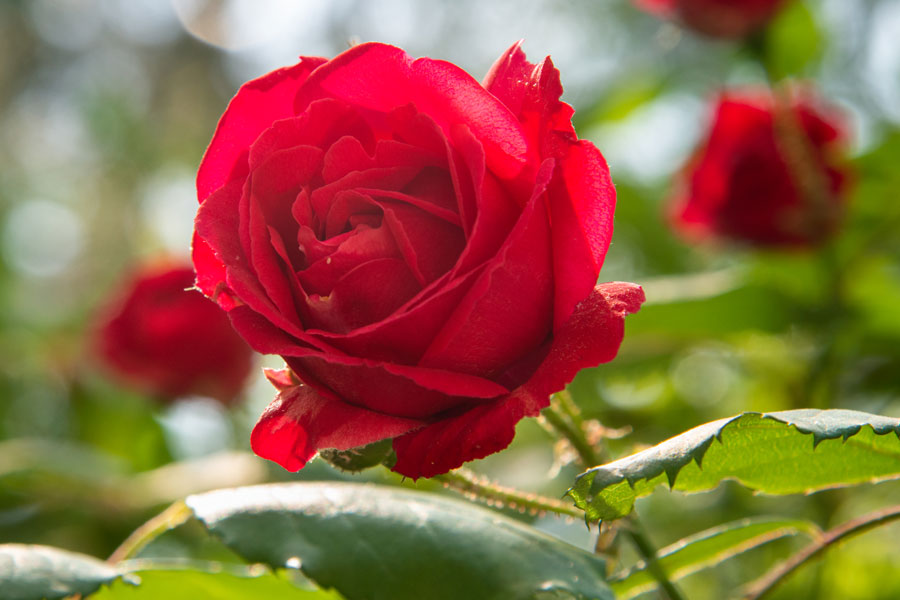
Source Image: www.racv.com.au
Rose Cultivation
Troubleshooting Common Problems
Addressing common rose problems ensures healthy plants and continuous blooms.
Identifying Growth Issues
Common growth issues include yellowing leaves, stunted growth, and poor blooming.
| Issue | Possible Cause |
|---|---|
| Yellowing Leaves | Overwatering, nutrient deficiency |
| Stunted Growth | Poor soil, lack of nutrients |
| Poor Blooming | Improper pruning, insufficient sunlight |
Solutions for Poor Blooming
Enhance blooming by adjusting care practices, such as pruning, fertilizing, and ensuring adequate sunlight.
| Practice | Tip |
|---|---|
| Pruning | Properly prune to encourage blooms |
| Fertilizing | Use high-phosphorus fertilizer |
| Sunlight | Ensure at least 6 hours of direct sunlight |
Dealing with Environmental Stressors
Environmental stressors like extreme temperatures and drought can impact roses.
| Stressor | Management |
|---|---|
| Heat | Mulch to retain moisture, provide shade |
| Cold | Mulch heavily, use protective covers |
| Drought | Deep watering, mulching to conserve moisture |
Advanced Rose Cultivation Techniques
Explore advanced techniques for growing roses in containers, as bonsai, and hydroponically.
Growing Roses in Containers
Container growing allows flexibility and is ideal for small spaces.
| Tip | Description |
|---|---|
| Container Size | Use large pots with good drainage |
| Soil Mix | Well-draining, nutrient-rich mix |
| Watering | More frequent watering needed |
Rose Bonsai: Miniature Rose Trees
Creating rose bonsai involves careful pruning and training to achieve miniature trees.
| Step | Description |
|---|---|
| Pruning | Regularly prune to shape and control size |
| Wiring | Use wire to train branches |
| Potting | Use shallow bonsai pots |
Hydroponic Rose Cultivation
Hydroponic growing allows for soil-less cultivation, providing precise control over nutrients.
| Benefit | Description |
|---|---|
| Control | Precise nutrient and pH control |
| Space-Efficient | Ideal for limited space |
| Faster Growth | Accelerated growth rates |
Environmental Impact of Rose Cultivation
Understanding the environmental impact of rose cultivation helps in adopting sustainable practices.
Sustainable Rose Growing Practices
Adopt eco-friendly practices to minimize environmental impact.
| Practice | Description |
|---|---|
| Organic Methods | Use organic fertilizers and pest control |
| Water Conservation | Drip irrigation, mulching |
| Native Varieties | Grow disease-resistant native roses |
Reducing Chemical Use in Rose Gardens
Minimize chemical use by adopting natural alternatives and integrated pest management.
| Method | Description |
|---|---|
| Natural Pesticides | Neem oil, insecticidal soap |
| Biological Control | Introduce beneficial insects |
| Cultural Practices | Proper spacing, pruning |
Water Conservation Techniques
Implement water-saving techniques to reduce water usage in rose gardens.
| Technique | Description |
|---|---|
| Drip Irrigation | Efficiently delivers water to roots |
| Mulching | Reduces evaporation, retains soil moisture |
| Rainwater Harvesting | Collect and use rainwater |
Rose Shows and Competitions
Participating in rose shows can be an exciting way to showcase your best blooms.
Preparing Roses for Exhibitions
Preparing roses for shows involves careful grooming and presentation.
| Step | Description |
|---|---|
| Selection | Choose the best, undamaged blooms |
| Cleaning | Gently clean leaves and petals |
| Presentation | Use proper vases, arrange attractively |
Judging Criteria in Rose Shows
Understand the criteria judges use to evaluate roses in competitions.
| Criterion | Description |
|---|---|
| Form | Symmetry and shape of bloom |
| Color | Intensity and uniformity |
| Condition | Health and cleanliness |
Participating in Local and International Competitions
Engage in local and international rose shows to connect with other enthusiasts and gain recognition.
| Event Type | Benefit |
|---|---|
| Local Shows | Community engagement, networking |
| International Shows | Exposure, prestige |
Historical and Cultural Significance of Roses
Roses hold significant historical and cultural value across the world.
Roses in Different Cultures and Traditions
Roses symbolize various meanings in different cultures, from love to purity.
| Culture | Symbolism |
|---|---|
| Greek | Aphrodite, goddess of love |
| Roman | Symbol of luxury and indulgence |
| Chinese | Good fortune and prosperity |
Famous Historical Roses
Certain rose varieties have historical significance due to their unique characteristics or historical events.
| Rose | Historical Significance |
|---|---|
| ‘Peace’ | Symbol of post-World War II peace |
| ‘Damask’ | Used in ancient perfumes and medicines |
| ‘Rosa Gallica’ | Symbol of the House of Lancaster in the Wars of the Roses |
Roses in Literature and Art
Roses have inspired countless works of literature and art, symbolizing various themes.
| Work | Description |
|---|---|
| Shakespeare | “A rose by any other name…” from Romeo and Juliet |
| Art | Paintings by artists like Pierre-Joseph Redouté |
| Poetry | Symbol of love, beauty, and ephemeral nature |
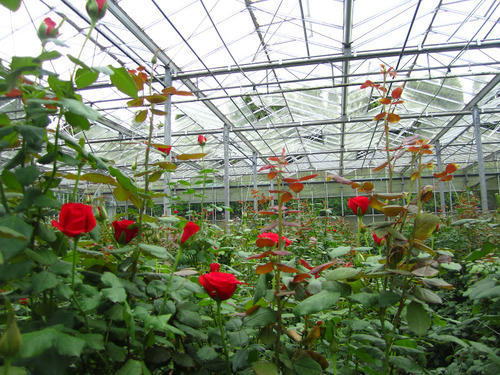
Source Image: www.agrifarming.in
Resources and Further Reading
For those interested in diving deeper into rose cultivation, numerous resources are available.
Recommended Books on Rose Cultivation
Several books provide comprehensive information on growing and caring for roses.
| Book | Author |
|---|---|
| The Rose Bible | Rayford Clayton Reddell |
| Roses: A Care Manual | Richard Ross |
| The Organic Rose Garden | Liz Druitt |
Online Forums and Communities
Join online forums and communities to connect with other rose enthusiasts and exchange tips.
| Forum | Description |
|---|---|
| Rose Gardening Forum | Discussions on rose care and troubleshooting |
| American Rose Society | Resources, events, and member benefits |
| Reddit: r/gardening | Community sharing gardening experiences |
Local Rose Societies and Clubs
Engage with local rose societies and clubs to participate in events and access specialized knowledge.
| Society | Benefit |
|---|---|
| American Rose Society | Local chapters, events, resources |
| Royal National Rose Society | UK-based, events, and resources |
| Local Garden Clubs | Networking, workshops, and garden tours |
Rose cultivation is a fulfilling hobby that brings beauty, fragrance, and joy to any garden. With the right knowledge and techniques, you can grow and enjoy healthy, vibrant roses that will be the envy of your neighborhood. Whether you’re planting your first rose or expanding your rose garden, the journey of growing these beloved flowers is always rewarding. Happy gardening!

Source Image: www.pinterest.com

Source Image: www.asiafarming.com

Source Image: www.fromhousetohome.com

